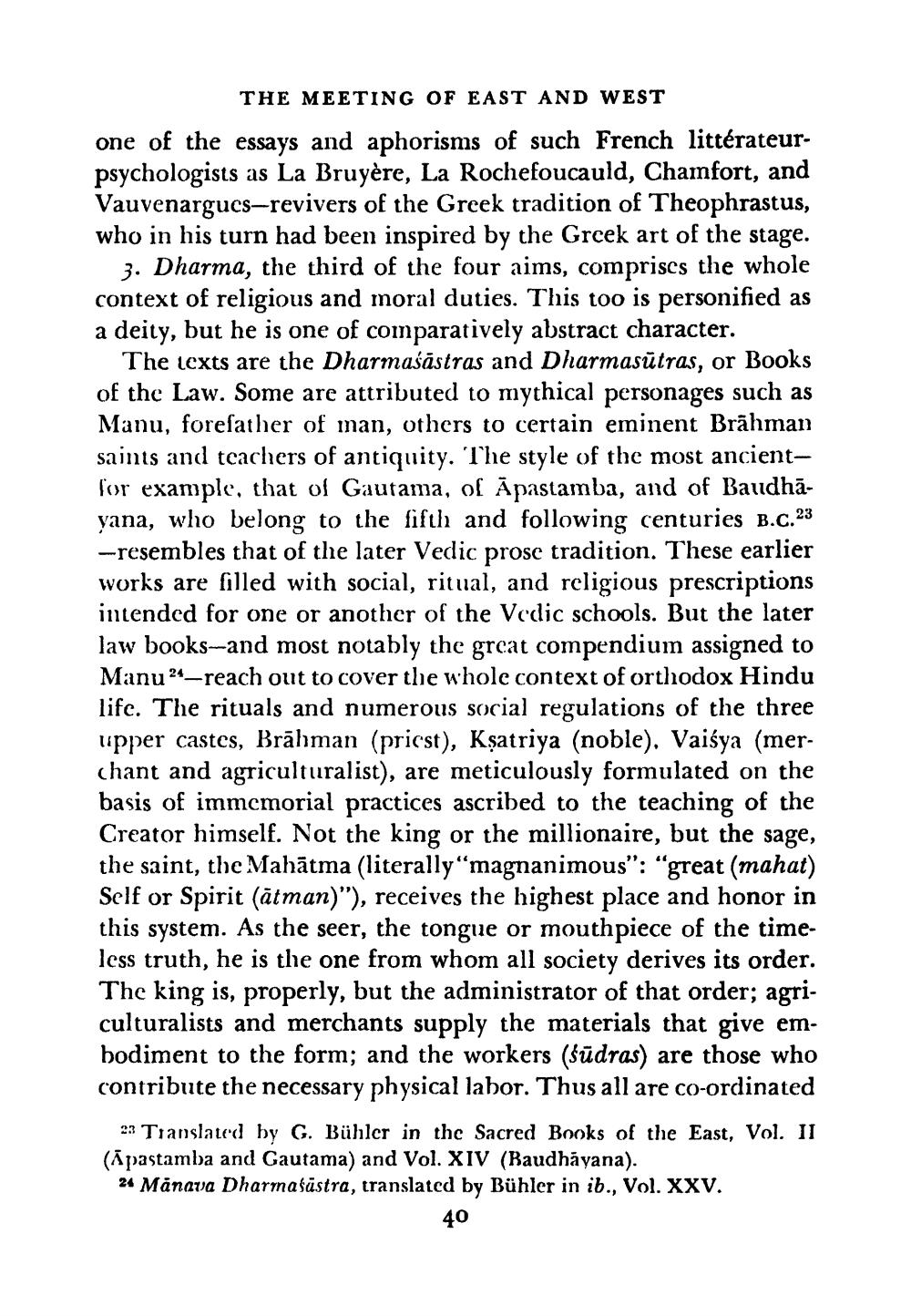________________
THE MEETING OF EAST AND WEST
one of the essays and aphorisms of such French littérateurpsychologists as La Bruyère, La Rochefoucauld, Chamfort, and Vauvenargucs-revivers of the Greek tradition of Theophrastus, who in his turn had been inspired by the Greek art of the stage.
3. Dharma, the third of the four aims, comprises the whole context of religious and moral duties. This too is personified as a deity, but he is one of comparatively abstract character.
The texts are the Dharmasastras and Dharmasūtras, or Books of the Law. Some are attributed to mythical personages such as Manu, forefather of man, others to certain eminent Brahman saints and teachers of antiquity. The style of the most ancientfor example, that of Gautama, of Apastamba, and of Baudhāyana, who belong to the fifth and following centuries B.C.23 -resembles that of the later Vedic prose tradition. These earlier works are filled with social, ritual, and religious prescriptions intended for one or another of the Vedic schools. But the later law books-and most notably the great compendium assigned to Manu 24-reach out to cover the whole context of orthodox Hindu life. The rituals and numerous social regulations of the three upper castes, Brāhman (priest), Kṣatriya (noble), Vaiśya (merchant and agriculturalist), are meticulously formulated on the basis of immemorial practices ascribed to the teaching of the Creator himself. Not the king or the millionaire, but the sage, the saint, the Mahātma (literally "magnanimous": "great (mahat) Self or Spirit (atman)"), receives the highest place and honor in this system. As the seer, the tongue or mouthpiece of the timeless truth, he is the one from whom all society derives its order. The king is, properly, but the administrator of that order; agriculturalists and merchants supply the materials that give embodiment to the form; and the workers (šūdras) are those who contribute the necessary physical labor. Thus all are co-ordinated
23 Translated by G. Bühler in the Sacred Books of the East, Vol. II (Apastamba and Gautama) and Vol. XIV (Baudhāyana).
24 Mänava Dharmaśāstra, translated by Bühler in ib., Vol. XXV.
40




